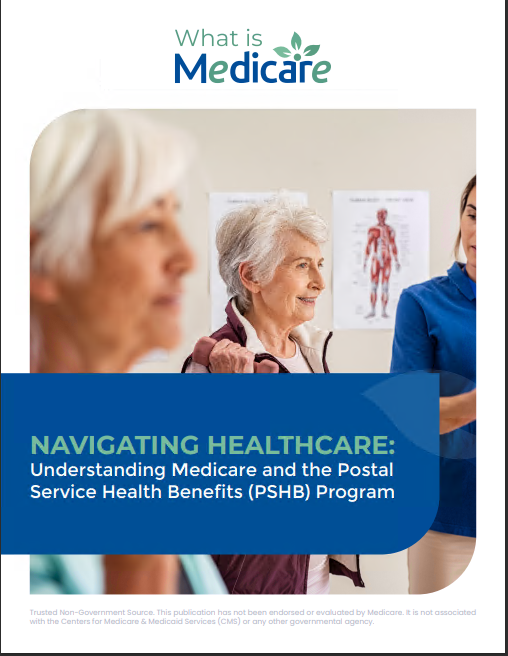Key Takeaways
-
Missing your Medicare enrollment window in 2025 can lead to lifelong penalties, higher premiums, and even a coverage gap that leaves you uninsured.
-
There are specific enrollment periods, and unless you qualify for a Special Enrollment Period, delays often come at a steep financial and medical cost.
What the Medicare Enrollment Window Really Means in 2025
You might assume that Medicare just starts automatically at age 65. That is not always the case. In 2025, understanding exactly when and how to enroll is more than just good planning—it’s essential protection against penalties that can follow you for the rest of your life.
Medicare has several distinct enrollment periods, and missing the right one for your situation could mean delayed coverage and added costs. The consequences aren’t just one-time inconveniences; they can compound year after year.
The Initial Enrollment Period (IEP): Your First Opportunity
For most people, your Medicare journey begins with the Initial Enrollment Period (IEP), which is based on your 65th birthday. The IEP lasts for seven months total:
-
Begins three months before the month you turn 65
-
Includes your birthday month
-
Ends three months after
During this window, you can sign up for Medicare Part A and Part B. If you wait until the last few months of this period to enroll, your coverage may be delayed, which can leave you with a gap in health insurance.
What Happens if You Miss the IEP
If you miss your IEP and don’t qualify for a Special Enrollment Period, you may be forced to wait until the General Enrollment Period (GEP), which runs from January 1 to March 31 each year. Any coverage you sign up for during the GEP won’t start until July 1, leaving a substantial window where you may be uninsured.
That alone is problematic. But the financial penalties make it worse.
Late Enrollment Penalties in 2025
Medicare penalties aren’t one-time fees—they accumulate over time and are often permanent. Here’s what you could face:
Part A Penalty
Most people don’t pay a premium for Part A because they paid Medicare taxes during their working years. But if you don’t qualify for premium-free Part A and delay enrollment, you may have to pay an additional 10% on your monthly premium. This penalty lasts twice the number of years you delayed enrollment.
Part B Penalty
Part B has a monthly premium in 2025, and delaying enrollment without a valid reason results in a 10% increase for each 12-month period you delayed. This higher premium stays with you for the rest of your life.
Part D Penalty
If you go 63 consecutive days or more without creditable prescription drug coverage after your IEP, you’ll pay a permanent late enrollment penalty. In 2025, that penalty equals 1% of the national base premium multiplied by the number of full months you went without coverage. This amount gets added to your Part D premium every month.
The Special Enrollment Period (SEP): Your Lifeline If You’re Still Working
There is one major exception that protects you from penalties: the Special Enrollment Period (SEP). You can delay enrolling in Medicare Part B and Part D without penalty if:
-
You or your spouse are still working, and
-
You’re covered by an employer group health plan
Once your employment or employer coverage ends, you have an 8-month SEP to enroll in Medicare Part B without penalty. However, the SEP for Part D is only 2 months, so timing is especially critical if you need prescription coverage.
Even under SEP rules, missing your enrollment deadlines could leave you exposed to both coverage delays and permanent penalties.
Coverage Gaps: The Hidden Cost of Missing the Window
In addition to penalties, late enrollment often creates a coverage gap—a period where you have no health insurance at all. This can lead to out-of-pocket expenses for:
-
Emergency care
-
Hospital stays
-
Doctor visits
-
Prescription medications
Even one uninsured incident during this time could cost far more than any monthly premium. And once you’re in the system, you can’t just enroll immediately—delays are built into the Medicare timeline.
General Enrollment Period (GEP): Limited Second Chance
If you miss your IEP and don’t qualify for an SEP, the GEP may be your only option. Held every year from January 1 to March 31, this window allows you to enroll in Part A and/or Part B. However:
-
Coverage begins July 1—a delay that can last several months
-
Late penalties still apply
-
You may have limited access to prescription drug plans, which have their own deadlines and penalties
Why Many Miss the Window Without Realizing It
Despite being eligible, many people miss their enrollment period due to:
-
Assuming they are automatically enrolled
-
Not understanding their employment-based coverage does not count
-
Confusing deadlines across Medicare Parts A, B, and D
-
Thinking they can just “sign up later” without consequence
This confusion often results in harsh financial and medical consequences. That’s why proactive planning is essential well before you turn 65—or before your coverage or job ends.
2025 Medicare Timeline You Should Know
Here are the key enrollment dates and durations for 2025:
-
Initial Enrollment Period: 7 months around your 65th birthday
-
General Enrollment Period: January 1 – March 31
-
Coverage Start if Using GEP: July 1
-
Special Enrollment Period: 8 months for Part B, 2 months for Part D after employer coverage ends
-
Annual Enrollment Period (to change plans): October 15 – December 7
Understanding this calendar can help you avoid surprises that cost you both coverage and money.
Coordinating Employer Coverage and Medicare
If you’re still working at 65, it’s tempting to rely solely on your employer’s coverage. But doing so without proper coordination can be risky. Here’s what to consider:
-
Employer size matters: If your company has fewer than 20 employees, Medicare becomes your primary coverage whether you enroll or not.
-
Creditable coverage: Not all employer drug plans meet Medicare’s standards. If yours doesn’t, you’ll face a Part D penalty.
-
Ask HR in writing: Always get written confirmation that your group plan is creditable and that delaying Medicare enrollment won’t trigger penalties.
Tips to Avoid Missing Your Enrollment Window
Planning ahead is the best way to protect yourself. Consider these steps:
-
Mark your calendar at least six months before turning 65
-
Consult with a licensed agent to evaluate your unique situation
-
Review your employer’s health plan to determine if it qualifies as creditable coverage
-
Don’t wait until the last month of your IEP—early enrollment reduces the risk of delays
-
Keep documentation of all coverage and communications
Ignoring Medicare Deadlines Can Be Costly and Long-Lasting
Failing to enroll on time doesn’t just affect your current finances—it limits your future flexibility. Penalties become part of your Medicare premiums for life. Gaps in coverage can result in denied claims or large medical bills. Worse, many people don’t even realize the error until it’s too late to avoid penalties.
Acting early protects your income, your access to care, and your peace of mind.
If you have any uncertainty about your Medicare enrollment timeline or status, get in touch with a licensed agent listed on this website for clear, personalized guidance.










